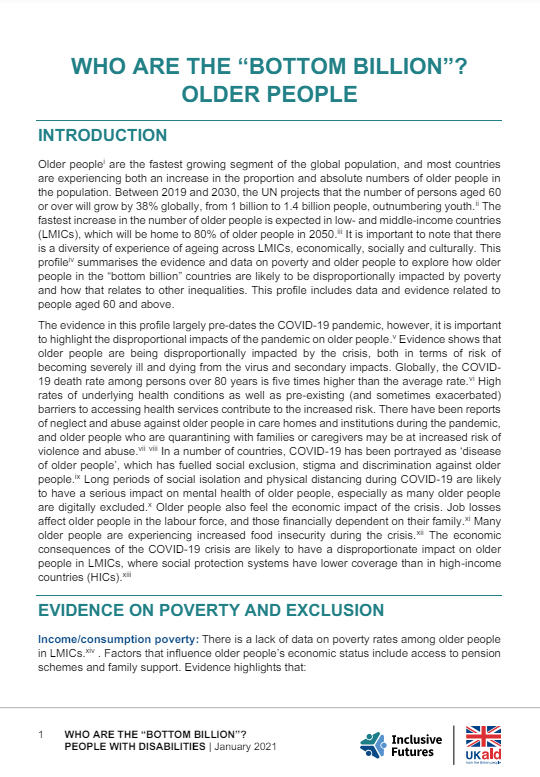This resource is part of a series of ‘poverty profiles’ by the Disability Inclusion Helpdesk (DI HD) focused on eight of the most marginalised group-based identities. It responds to the fact that global progress has not benefitted everyone equally, with many individuals remaining marginalised and extremely poor. Often, this is due to identity-based discrimination related to their disability status, age, ethnicity, or gender; and geographic disadvantage, for example through conflict or crisis. These disparities are often masked at the country level: with progress measured as an average across the whole population.
This profile summarises data and evidence on poverty and older people (aged 60 and above). It looks at the situation in low- and middle-income countries, which will be home to 80% of older people by 2050. The profile explores how older people are likely to be disproportionately impacted by poverty and how that relates to other inequalities, geography, conflict and displacement. It examines the evidence on older people’s poverty and exclusion in relation to income poverty, health, education, employment, discrimination and violence, political engagement and climate change. It concludes with challenges and limitations of existing data on older people and poverty.

